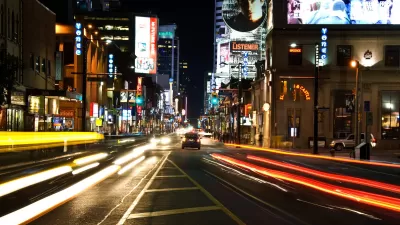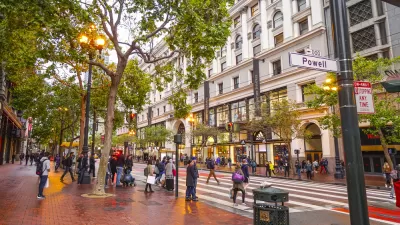San Francisco was awarded a federal grant in 2018 that it was forced to return in 2022 because it couldn't start construction by 2025.

The Better Market Street project, approved by the San Francisco Board of Supervisors in 2019, has hit a snag: San Francisco is returning $15 million in federal grant funding for a project project because it expects to miss a construction deadline set for 2025.
Richard Cano reports on the details of the planning and bureaucracy failure for the San Francisco Chronicle.
"When San Francisco officials approved the ambitious Better Market Street project in 2019, they envisioned it would come with the construction of a rail loop for its historic streetcars," writes Cano."But the turnaround loop for Muni’s F line, planned just east of United Nations Plaza at Seventh and McAllister streets, has become the latest item in the project to get delayed or scaled back."
J.K. Dineen reported on the $15 million grant when it was awarded through the BUILD Grant program.
The loop for the F line has been moved to a later phase of construction. "Project leaders filled the $15 million funding hole with bond funds, and it’s unclear when, or if, the project will advance beyond its first phase of construction," according to Cano. Despite the setback, the Better Market Street project has already had an impact on the city's central business district, closing the street to most automobile traffic in January 2020.
FULL STORY: S.F. must return $15 million in grants to revitalize Market Street after failing to hit deadline

Trump Administration Could Effectively End Housing Voucher Program
Federal officials are eyeing major cuts to the Section 8 program that helps millions of low-income households pay rent.

Planetizen Federal Action Tracker
A weekly monitor of how Trump’s orders and actions are impacting planners and planning in America.

Ken Jennings Launches Transit Web Series
The Jeopardy champ wants you to ride public transit.

‘Minnesota Nice’ Isn’t so Nice When You Can’t Find a Place to Live
The Economic Development and Housing Challenge Program can help address the scourge of homelessness among Indigenous people.

NYC Open Streets Organizers Call for City Support
The number of open streets projects has dropped year after year as volunteer groups struggle to fund and staff them.

Crime Continues to Drop on Philly, San Francisco Transit Systems
SEPTA and BART both saw significant declines in violent crime in the first quarter of 2025.
Urban Design for Planners 1: Software Tools
This six-course series explores essential urban design concepts using open source software and equips planners with the tools they need to participate fully in the urban design process.
Planning for Universal Design
Learn the tools for implementing Universal Design in planning regulations.
Heyer Gruel & Associates PA
Ada County Highway District
Institute for Housing and Urban Development Studies (IHS)
City of Grandview
Harvard GSD Executive Education
Toledo-Lucas County Plan Commissions
Salt Lake City
NYU Wagner Graduate School of Public Service




























